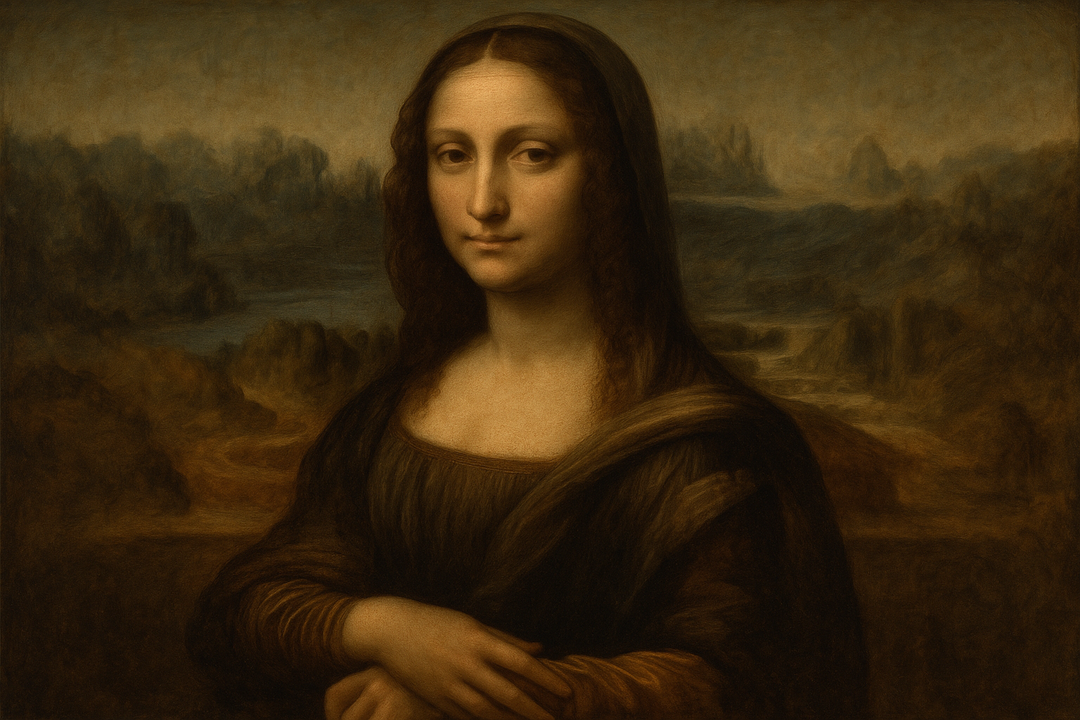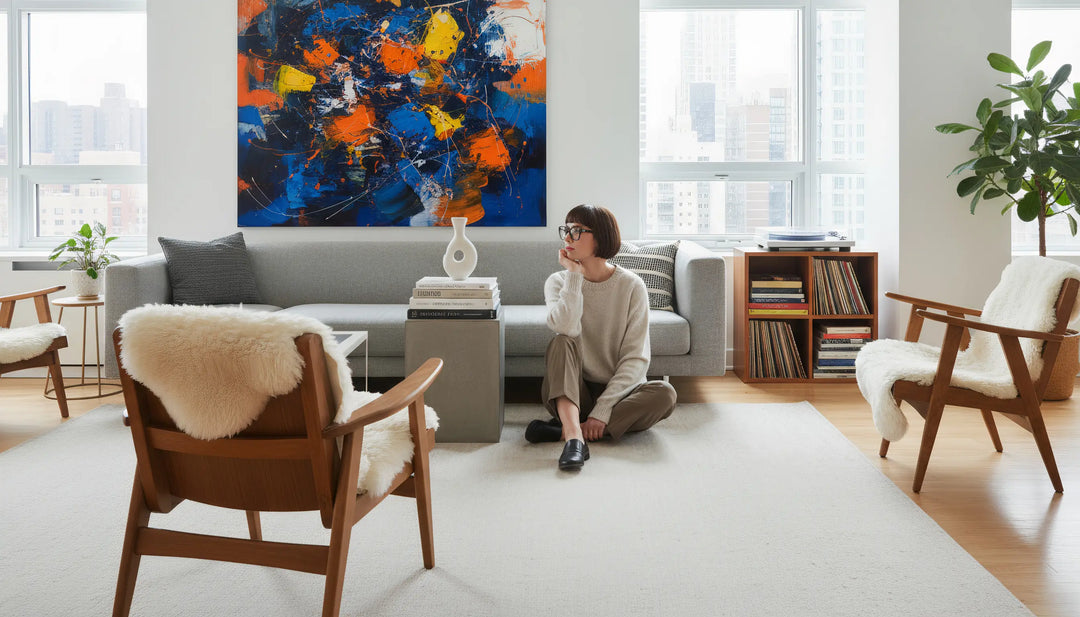Key Takeaways
- Yokohama prints emerged after Japan's forced opening in 1853-1854, documenting first encounters with Westerners
- Around 500 different prints were created by 31 artists between 1859-1862, now highly sought after by collectors
- These Japanese art prints captured Western technology like trains, ships, and clothing previously unknown to Japan
- Artists blended traditional ukiyo-e techniques with Western perspective and lighting methods
Japan had isolated itself from the rest of the world for centuries, with only Dutch merchants from the East India Trading Company allowed to conduct import and export dealings with the country. These merchants were restricted to the small island of Deshima in Nagasaki Harbor, and all other foreign contact was strictly forbidden.

Dutch East India Company merchants confined to Dejima island in Nagasaki Harbor during Japan's isolation period
However, some accounts from the 19th century suggest that the Dutch also operated a lucrative smuggling business, secretly bringing people into and out of Japan. It wasn't until 1853 that Japan began to open its doors to the rest of the world and lift its ban on foreign travelers and merchants.

Commodore Perry's intimidating black ships arriving in Yokohama harbor, forcing Japan to end its isolation
What are Yokohama Prints?
The Treaty of Kanagawa in 1854 and the start of the Meiji era in 1868 marked a significant shift in Japan's history as the country began to open its doors to the outside world. As a result, Yokohama-e prints, also known as "Yokohama pictures," became extremely popular as they provided Japanese people with their first glimpses of foreigners and Western technical achievements such as trains and iron ships.
These Japanese art prints, which depicted a wide range of subjects including maps, leisure activities, and entertainment, satisfied the public's curiosity and fascination with all things foreign. The demand for Yokohama-e was driven by the fact that many Japanese people had never seen or even imagined such sights before, and these prints provided a window into a new and exciting world.

Typical Yokohama-e scene showing fascinated Japanese observers viewing Western foreigners in unfamiliar clothing
The Treaty of Kanagawa
In the mid-19th century, the United States naval fleet led by Commander Matthew Calbraith Perry engaged in negotiations with Japan to open its borders. These negotiations resulted in the signing of the Treaty of Kanagawa in 1854.
Following the lead of the United States, European countries such as England, France, Russia, and the Netherlands also concluded treaties with Japan in order to promote commercial relations. These five nations became known as the Treaty Nations.
Historical Context
The Treaty of Kanagawa marked the end of Japan's 220-year isolation policy (sakoku). Perry's "Black Ships" demonstration of superior Western naval technology convinced Japanese leaders that resistance was futile, fundamentally altering Japan's relationship with the world.
Prior to the Treaty of Kanagawa, the Japanese population had little interaction with foreigners and were fascinated by the different technologies and ways of life of these outsiders. This fascination inspired the creation of a new art form, ukiyo-e, which depicted scenes of iron ships, horse-drawn carriages, locomotives, steam vessels, and hot air balloons, all of which were previously unknown to Japan.

Revolutionary Western technology like steam locomotives captured in traditional Japanese artistic style
The Enclave of Yokohama
Foreigners were once only allowed to live in the region surrounding Yokohama Harbor. Thus, from then on, these prints are known as Yokohama prints or Yokohama-e (e means picture in Japanese).
In the beginning, non-Japanese were restricted to areas within 25 miles of Yokohama. The prohibition was mostly a precaution meant to keep the samurai from attacking the foreigners.
British businessman Charles Richardson was murdered in 1862 on the Tokaido Road west of Yokohama while on a horseback riding expedition. The Namamugi event is what caused this. In 1863, the British Navy launched a reprisal assault on the Satsuma fleet as a result of the event.
The Subjects
The themes shown in Yokohama prints allow for easy categorization. There include depictions of foreigners, as well as maps, ships, rituals, and significant events. Typical subjects for Yokohama prints include families with children, pets, and even maids and cooks. Many of these pictures were likely commissioned by visiting officials from other countries.
Famous Yokohama Artists
According to art historian Ann Yonemura, there were a total of around 500 different Yokohama prints designed by 31 artists between 1859 and 1862. These prints were created by Japanese ukiyo-e artists who were interested in depicting the foreigners and their technology, as well as incorporating Western painting techniques such as perspective and the use of light and shadow.

Artistic fusion: Traditional Japanese woodblock techniques meet Western perspective and composition
The Yokohama prints are known for their interesting subjects and charming use of these techniques, which has made them highly coveted by collectors.

The evolution of Japanese woodblock printing techniques showing the progression from traditional ukiyo-e to the innovative Yokohama-e style
Some of the notable artists who created Yokohama prints include Chikanobu Toyohara, Hiroshige II Utagawa, Hiroshige III Utagawa, Kuniaki II Utagawa, Kunihisa Utagawa, Kuniteru II Utagawa, Kunitoshi Utagawa, Sadahide Utagawa, Unsen, Yoshiiku Utagawa, Yoshikazu Utagawa, Yoshimori Taguchi, Yoshitora Utagawa, Yoshitoshi Taiso, and Yoshitoyo Utagawa.
Yokohama-e Art Prints as Collectibles
Yokohama prints, due to their rarity, can often be expensive for collectors to acquire. However, it is important to note that the quality of some of these prints may not be as high as desired, as they may have been poorly produced in large quantities to meet market demand, or may have suffered from wear and tear over time. As a result, collectors may need to be willing to make some compromises in terms of quality when seeking out these prints.

Authentic Yokohama prints require careful examination for authentication and condition assessment
Collector's Guide
- Authentication: Look for publisher's marks, artist signatures, and period-appropriate paper and pigments
- Condition factors: Check for fading, foxing, tears, or amateur restoration attempts
- Rarity premium: Prints from famous artists like Hiroshige II and Sadahide command higher prices
- Market value: Authentic pieces range from hundreds to tens of thousands of dollars depending on artist and condition
Discover Japanese Art Prints for Your Space
Bring the beauty and cultural richness of traditional Japanese art into your home with our carefully curated collection of authentic-style prints celebrating the ukiyo-e tradition that inspired Yokohama-e artists.
Understanding Yokohama Woodblock Prints Today
In conclusion, Yokohama prints were a type of ukiyo-e art that depicted scenes from the restricted area around Yokohama harbor where foreigners were allowed during the early years of Japan's relations with the Treaty Nations. These prints were created by Japanese artists who were interested in introducing Western painting techniques such as perspective and the use of light and shadow.
The Yokohama prints are known for their charming depiction of foreigners and their technology, and have become highly sought after by collectors. However, due to their rarity, these prints can be expensive and may not always be of the highest quality due to mass production or wear and tear.
Overall, the Yokohama prints offer a unique glimpse into the early interactions between Japan and the outside world, and continue to be appreciated for their artistic and historical value.
Learn More About Ukiyo-e
Dive deeper into Japanese woodblock printing with this comprehensive video from the Museum of Fine Arts, Boston exploring the many worlds of ukiyo-e prints.
Frequently Asked Questions
Why are Yokohama prints important to collectors today?
Yokohama prints represent a unique historical moment when Japan first encountered the Western world. Their rarity (only 500 known prints), artistic fusion of Eastern and Western techniques, and documentation of cultural exchange make them highly valuable to both art collectors and historians.
How do Yokohama prints differ from traditional ukiyo-e?
While using traditional woodblock printing techniques, Yokohama prints incorporated Western artistic elements like linear perspective, realistic lighting, and depth. They also featured entirely new subject matter: foreign people, Western technology, and cross-cultural encounters unprecedented in Japanese art.
What should collectors look for when buying Yokohama prints?
Authentic Yokohama prints should have period-appropriate washi paper, original mineral pigments, proper publisher seals, and artist signatures. Avoid prints with modern inks, machine-cut edges, or suspicious restoration. Consult experts from institutions like the Library of Congress Japanese Print Collection for authentication.
Explore Further
Visit world-class collections at the Metropolitan Museum of Art, British Museum, or the specialized Yokohama Museum of Art to see original Yokohama-e prints in person.
This article was researched and written in-house by art historians specializing in Japanese cultural exchange during the Meiji Restoration period. Our content aims to provide accurate historical context while helping readers discover beautiful Japanese wall art for their homes through our curated collection.
Related: What is ukiyo-e art?
















